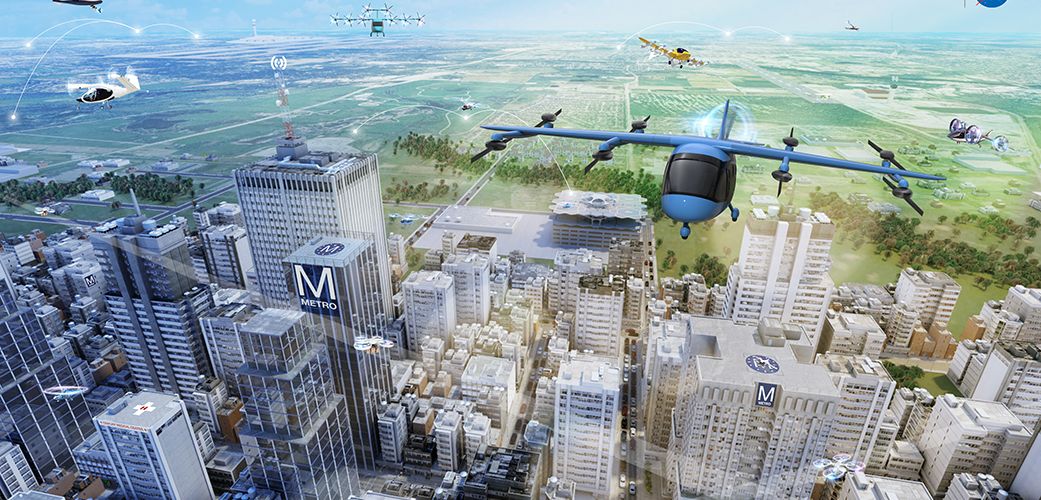BU researchers with NASA funding will lead a multimillion-dollar, multi-institution project to help develop quieter vertical lift air vehicles
Forgot to order dinner or a birthday gift? Have a drone land an order on your doorstep. Need to hop a short distance from one city to another, but don’t want to wait in traffic or baggage lines? Jump on a lightweight, multirotor rideshare aircraft. This future—in some places, this present—promised by vertical lift air vehicles might seem super convenient, but with all those buzzing rotors filling the sky, it could also be very noisy.
Just ask the residents of suburban Queensland, Australia. For the past couple of years, Alphabet-owned drone delivery company Wing has zipped above streets with thousands of restaurant and grocery orders for companies like DoorDash and supermarket chain Coles. It may sound very Jetsons-like, but not all residents are happy with this soaring progress: the automated drones are reportedly shattering peaceful neighborhoods with a cacophony of noise—like a swarm of angry bees.
For NASA, it throws up an intriguing problem: how do you advance a cool flight technology without making such a racket? The agency has awarded a Boston University–led team funding to help develop safe, affordable, and quiet vertical lift air vehicles, which are electric aircraft—classed as Advanced or Urban Air Mobility vehicles—that have four or more rotors and can take off and land vertically. The University Leadership Initiative grant—one of four awarded with a combined total of up to $25.1 million over four years—will support research into the technical and environmental challenges of flying in urban environments.

Associate Professor Sheryl Grace (ME) will lead the project, which also includes Assistant Professor Roberto Tron (ME, SE), among other collaborators. The BU team brings experience studying topics as diverse as rotor performance, how winds swirl through cities, and autonomous vehicle control. “All of the expertise needed to address this challenge has been developed over many years,” says Grace. “And now we just need to go after these new questions.”
The Brink spoke with Grace about the present—and future—of urban flight, how to curtail a drone’s buzzing, and why NASA is getting involved.
Read the full Q&A at BU’s The Brink.
Banner: A NASA concept image showing different types of Advanced Air Mobility aircraft flying over urban, suburban, and rural areas. NASA graphic by Lillian Gipson and Kyle Jenkins. Courtesy of Teresa Whiting/NASA Armstrong Flight Research Center
